Research
We develop new methods and algorithms for electronic structure theory. Click the links below to find out more!
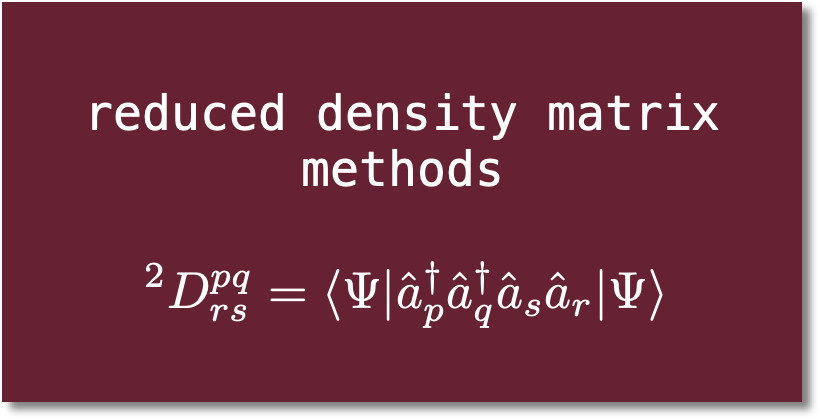
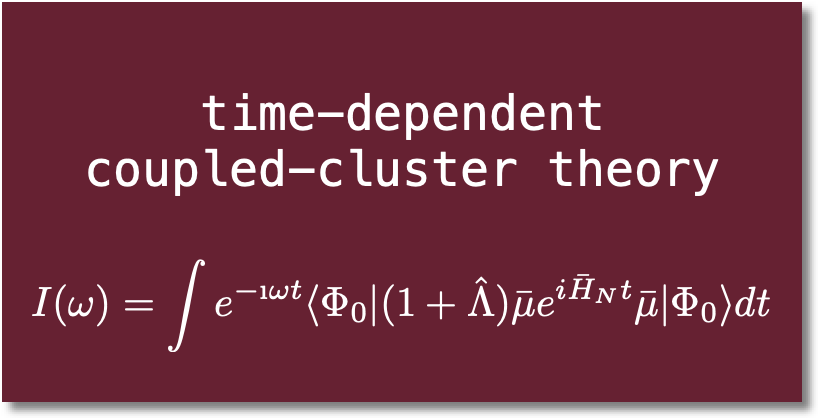
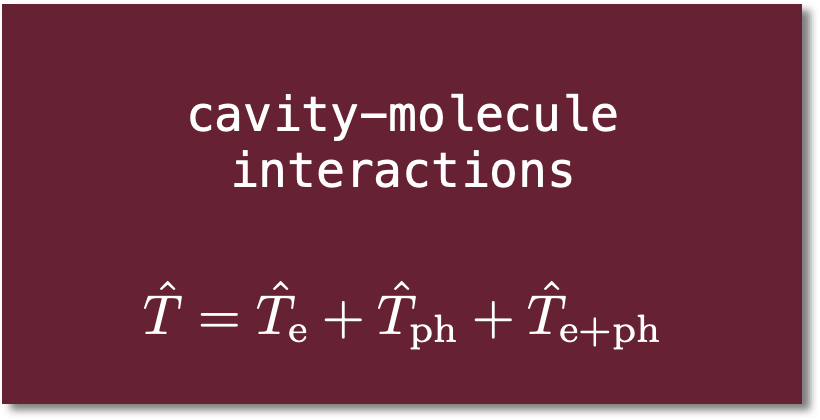
Time-dependent coupled-cluster theory
The seminar below gives an overview of time-dependent coupled-cluster methods.
Time-domain approaches to the electronic excited-state problem carry several potential advantages over more familiar frequency-domain approaches. First, time-domain approaches are the more natural ones for describing certain types of processes (e.g., strong-field / non-linear effects, interactions with shaped optical pulses, etc.). Second, time-domain approaches offer technical advantages in that spectral information over an arbitrarily-broad energy window can be obtained from a single (or a few) time-domain simulations. Figures 1 and 2 depict linear absorption spectra obtained from a moment-based time-dependent (TD) equation-of-motion (EOM) coupled-cluster (CC) theory, for two cases where the time-domain approach carries this latter technical advantage: modeling spectra for a system with a high density of states (Figure 1) and the simultaneous description of features separated by more than 200 eV (in this case, the K-edges of carbon and oxygen).
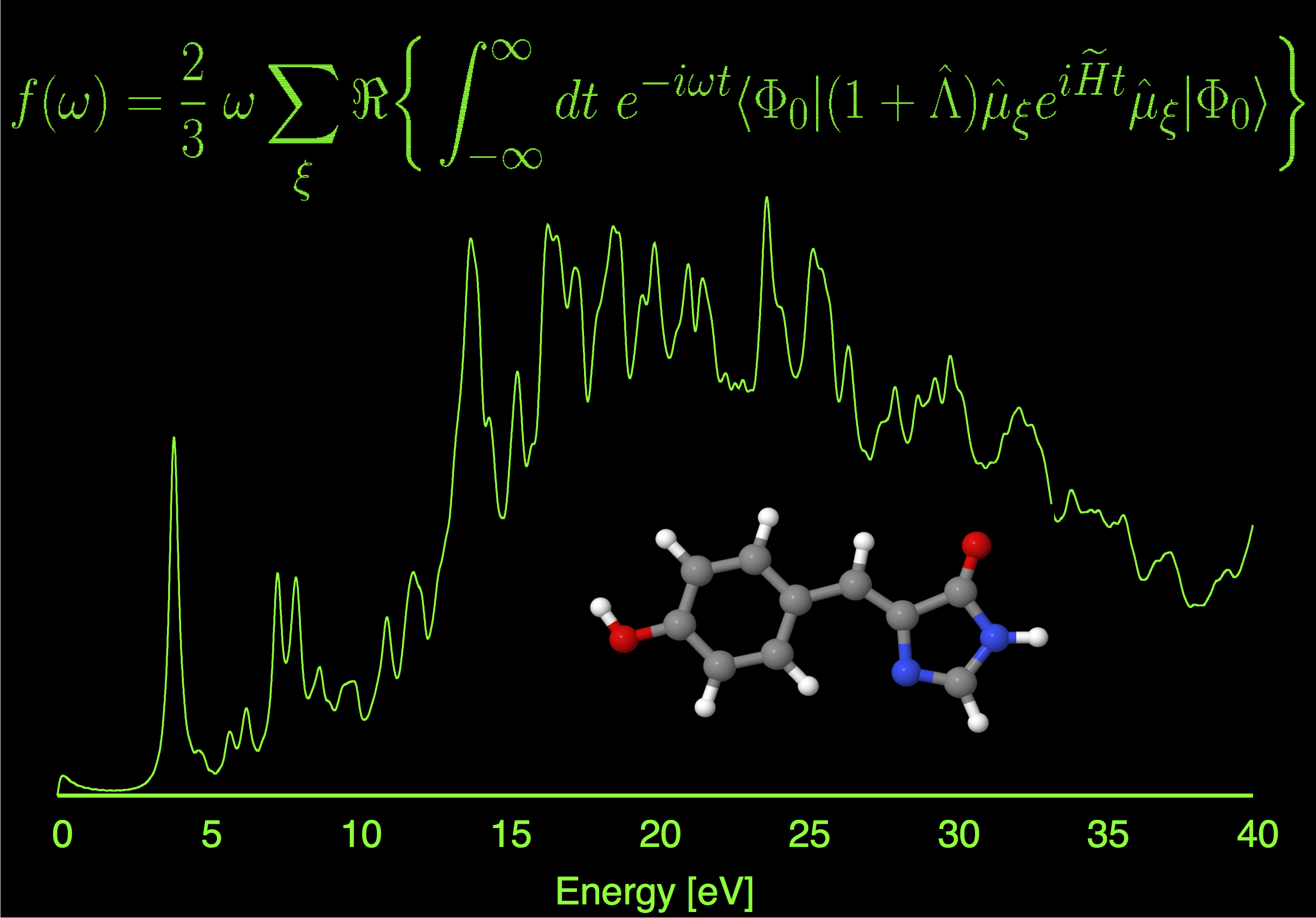
Figure 1. Absorption spectrum for green fluorescent protein chromaphore computed at the TD-EOM-CC2/cc-pVDZ level of theory.
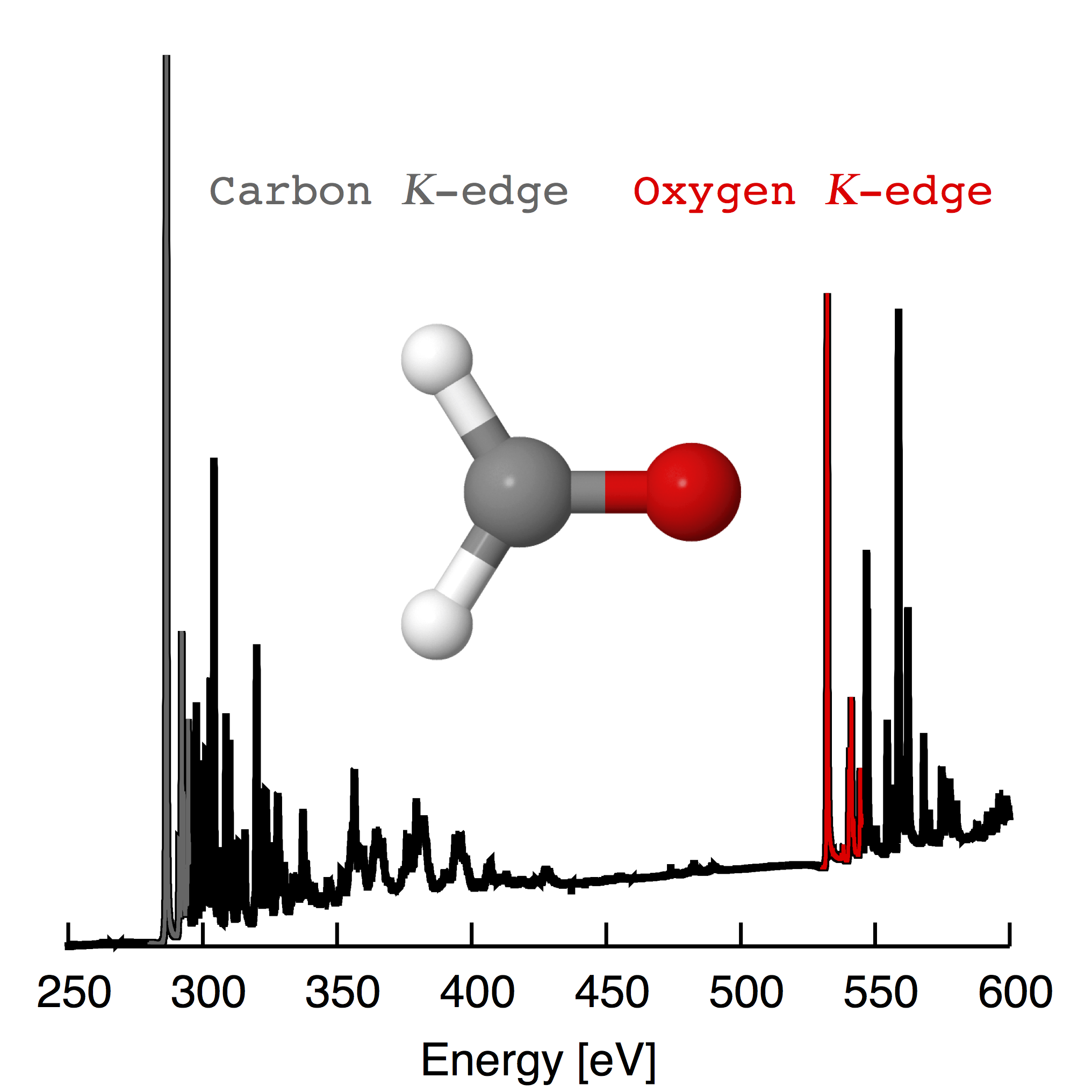
Figure 2. X-ray absorption features in formaldehyde computed at the TD-EOM-CCSD/aug-cc-pVTZ level of theory.
You an read more about moment-based TD-EOM-CC theory here:
- B. C. Cooper, L. N. Koulias, D. R. Nascimento, X. Li, and A. E. DePrince III, J. Phys. Chem. A, 125, 5438-5447 (2021).
Short iterative Lanczos integration in time-dependent equation-of-motion coupled-cluster theory - D. R. Nascimento and A. E. DePrince III, J. Chem. Phys., 151, 204107 (2019).
A general time-domain formulation of equation-of-motion coupled-cluster theory for linear spectroscopy - L. N. Koulias, D. B. Williams-Young, D. R. Nascimento, A. E. DePrince III, and X. Li, J. Chem. Theory Comput. 15, 6617-6624 (2019).
Relativistic real-time time-dependent equation-of-motion coupled-cluster - D. R. Nascimento and A. E. DePrince, III, J. Phys. Chem. Lett. 8, 2951-2957 (2017).
Simulation of near-edge X-ray absorption fine structure with time-dependent equation-of-motion coupled-cluster theory - D. R. Nascimento and A. E. DePrince, III, J. Chem. Theory Comput. 12, 5834-5840 (2016).
Linear absorption spectra from explicitly time-dependent equation-of-motion coupled-cluster theory






